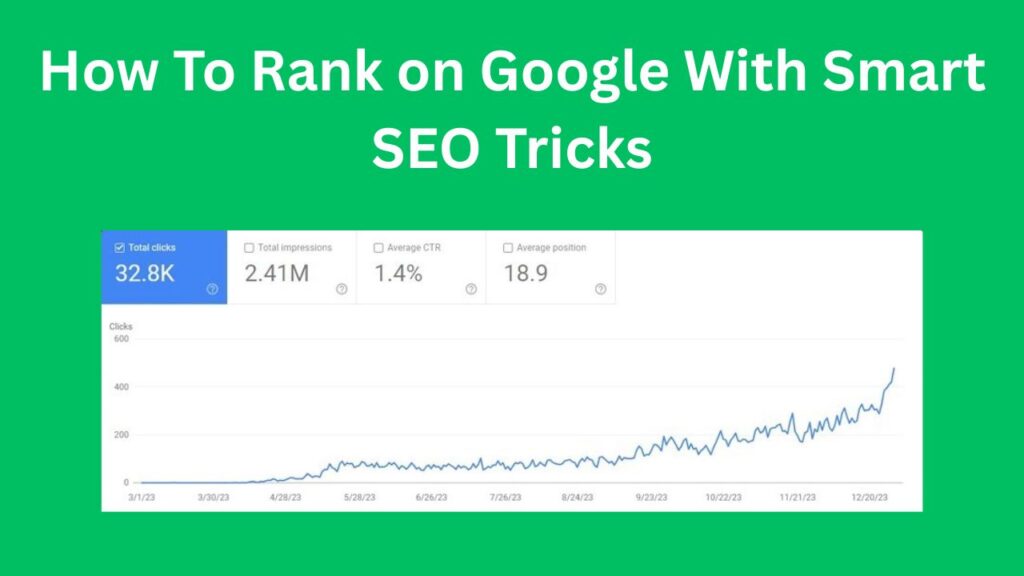If you want your website to rank on Google and bring in more visitors, you’re in the right place.
In this post, I’ll break down how I helped a website called Bonsai Mary grow fast using smart SEO strategies. You don’t need to be a tech expert to do this. I’ll explain everything in a simple way so you can follow along—even if you’re just starting out.
Let’s get into it!
Also Read: Pinterest SEO Secrets: How to Get 70,000 Free Clicks to Your Website!
Table of Contents
Step 1: Use the Right Tools
There are four tools you absolutely need:
- Google Search Console – Shows how your site is performing on Google.
- Google Analytics – Tracks your website traffic.
- Sitemap – Helps Google find and index your pages.
- Page Index Check – Confirms if your content is visible on Google.
These are all free and easy to set up.
Step 2: Understand the Two Types of SEO
There are two main types of SEO:
- Reactive SEO – Fixing things after they happen.
- Proactive SEO – Planning ahead to prevent problems and grow traffic.
Most people only react when traffic drops. But if you want to grow fast, you need both.
Step 3: Use Google Search Console to Spot Wins and Losses
Here’s how to do reactive SEO:
- Open Search Console.
- Click Date > Compare > Compare last 7 days to the previous 7.
- Go to Pages and check which posts gained or lost traffic.
If one post went from 14 clicks to 52, that’s great! If another went from 17 to 7, that’s a red flag.
Look closely at posts that dropped. Are they outdated? Missing images? Poor formatting? Fix those!
Step 4: Fix Low-Performing Content Fast
Let’s say you find a post that lost traffic. What do you do?
- Add a clean, attractive featured image
- Rewrite the intro to be more helpful and to the point
- Bold key sentences to improve readability
- Update the content to make it current
- Hit update and ask Google to re-index the page
Re-indexing tells Google: “Hey, I’ve improved this—please take another look.”
Step 5: Watch for Sitewide SEO Issues
Did you know that bad content can hurt your entire site?
Even if most of your content is great, one weak page can bring down your overall ranking. That’s why it’s so important to clean up or delete low-quality posts. Especially after updates like Google’s Helpful Content Update (HCU), this can make a big difference.
Step 6: Analyze Your Competitors (Sitemap Trick!)
Want a sneak peek into your competitors’ strategy?
Look at their sitemap by typing:yourcompetitor.com/sitemap_index.xml
You’ll see their most recent posts and image files. This tells you how often they publish, what topics they focus on, and how fresh their content is.
You can do this for your own site too and check which posts were published or updated long ago—those are the ones you should refresh.
Step 7: Make Old Content Better with Images and Structure
If a post has only text and no images, it’s boring. Readers won’t stay long, and Google notices that.
- Add at least 2–4 high-quality images
- Use bullet points and headings (H2s) to break up text
- Ask ChatGPT to generate cartoon-style images using your text
- Make sure images are 16:9 format for Google Discover
- Use .webp format for fast loading
- Add alt text and descriptive filenames for better SEO
Images make a huge difference in engagement and ranking.
Step 8: Create Listicle Posts That Attract Huge Traffic
One of the easiest ways to grow traffic is by publishing list-style articles like:
- 47 Best Indoor Plants for Beginners
- 22 Most Beautiful Flowering Bonsai Trees
- 15 Common Bonsai Pests and How to Fix Them
Why do these work?
- They get a lot of clicks on Google
- People stay longer to read them
- You can link to other posts on your site
Listicles are powerful for SEO and user engagement.
Step 9: Build Internal Links Like a Pro
When writing a listicle, make sure each item links to a separate article with more detail.
For example, if you mention “Spider Mites” in a pest list, link to a full article about how to get rid of spider mites. This increases page views, time on site, and trust with Google.
It also makes your site feel more like a helpful guide and less like a collection of random blog posts.
Step 10: Automate and Scale with a Simple Workflow
Want to scale up? Here’s how I do it:
- Pick keywords and listicle topics
- Use ChatGPT to generate ideas and text
- Add real images or AI-generated visuals
- Format the content nicely (headings, bullets, internal links)
- Publish, re-index, and move to the next post
My team now handles most of the writing and editing. I just guide the strategy, provide topics, and review results. This is how you build a content machine.
Final Thoughts: Consistency + Process = Growth
The truth is, growing a website isn’t about a single magic trick. It’s about building good habits and repeating them.
- Review your site regularly
- Fix what’s not working
- Refresh old content
- Add value with images and structure
- Keep publishing useful content
Bonsai Mary is now getting 800–1000 visits per day and growing fast—and we’re just getting started.
If you stay consistent and follow this plan, you can do it too.
Want More Tips?
I’m always sharing new SEO tips, tools, and content strategies. Follow along and stay ahead of the curve.


